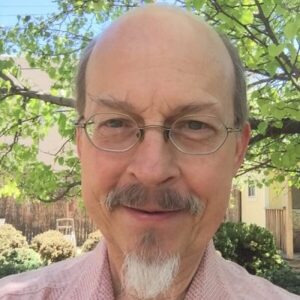Your cart is currently empty!

Holoflux: The Meanings of Stone – Day 2
- This event has passed.
January 28, 2024 @ 6:00 pm – 9:00 pm CET

No places available
[rtec-registration-form]
Facilitated by Lee Nichol
January 27 & 28, 2024
9:00am PST | 12:00pm EST | 5:00pm GMT | 6:00pm CET
The maximum number of 25 participants was reached, registration is closed.
The price of this workshop is 30 euros for the two-days, 6 hours. If you are interested in participating, please use the form above to pre-register.
This two-day, six-hour workshop is hands-on, and fully participatory. Each participant will need to acquire a new “found stone” (not store-bought) and work with that stone in ways specific to the workshop. In addition, each participant will give a brief report to the whole group, on Zoom, of what occurs when working with their found stone.
If you have an interest in this workshop, please read on, and make note of the requirements outlined below. Please don’t register if you feel you can’t follow these group guidelines.
Finding a stone prior to the workshop is the starting point. Stones are everywhere! Open fields, stream beds, hillsides, abandoned lots, the beach, mountains – even parking lots (car parks) – are good places to find stones. Some of the most amazing stones can be found in those concrete islands that partition outdoor parking lots. Urban or rural, you will have no problem finding a stone.
There are four key aspects in the finding. First, this must be a new stone, not one you already have. Second, it must be an opaque stone – no gemstones. Third, it should be palm-sized – easy to hold in the hand, not too big, not too small. Finally, the stone should appeal to you, should have some quality – tactile, visual, or otherwise – that draws you to it.
It is very useful to make notes of anything that seems of interest or value as you search for the stone. You could begin your search now, or you could begin a week or so before the workshop. You might gather multiple stones, and make a final decision shortly before we begin on Jan. 27.
Once you have a new stone, you may be inclined to engage with it right away, naturally and spontaneously. Try to resist this! Set it aside, considering it from afar. Of course, if you cannot resist, by all means enjoy the stone in any way you wish! But the less you work with the stone in advance, the more we will discover together.
Why is this?
The reason is simple. A few days before we begin the workshop, we will all receive some basic instructions on “how” to work with the stone. This short working (10 – 20 minutes) will be done privately, on an individual basis, a day or two before January 27. There is nothing complicated or mysterious in this. It will involve simple things like holding the stone in silence and paying attention to what kinds of sensings occur, and what kinds of images pass through consciousness. The key is that we are all starting from the exact same basis. Different stones, same approach. No one is out wandering into their own “way” of working with stones – we are all doing the same thing, very direct, very uncomplicated.
Needless to say, what occurs once we follow the simple instructions is another matter altogether. Each person will have their own individual and unique experiences. This is why the workshop title refers to “meanings” (plural). It is this great variety that will arise from within the group that allows us to begin to see “what really happens” when we work with a stone, as opposed to what we think should happen, or what we want to happen. When we work as a group with “what really happens,” and share that together, very rich possibilities emerge. Our first day, January 27, will largely consist of this sharing, relying on notes and memory. Making brief notes after each stage of your stone experiment is essential, as reporting back to the group is at the core of the work together.
The second day, January 28, we will use the results of our collective workings as a basis for asking, “What relationship does our body-consciousness have with stone?” Is there meaning, significance in that relationship, apart from utility and enjoyment? This query will lead to further considerations of rheosoma – the flowing body – and how engaging with stone might open new variants of very primordial human experiences.
If this collective, hands-on stone experiment speaks to you, in all its specificity, please join us for Holoflux: The Meanings of Stone.
To pre-register, use the form above or contact Eleanor Peat – eleanor@paricenter.com

Lee Nichol is a freelance writer and editor. His latest works are Entering Bohm’s Holoflux and, as editor, Holoflux: Codex – Form / Movement / Vision inspired by David Bohm (both from Pari Publishing). He was a long-time friend and collaborator of David Bohm, and is editor of Bohm’s On Dialogue, The Essential David Bohm, and On Creativity.
Lee has been on the faculty of the Arthur Morgan School in Celo, North Carolina; the Oak Grove School in Ojai, California; the Tibetan Nyingma Institute in Berkeley, California; and Denver University in Denver, Colorado. He sits on the Advisory Committee of the Pari Center, the Advisory Council of the Indigenous Education Institute, and is a member of the Founding Circle of the Native American Academy. He lives in Albuquerque, New Mexico with his wife Eva Casey.
